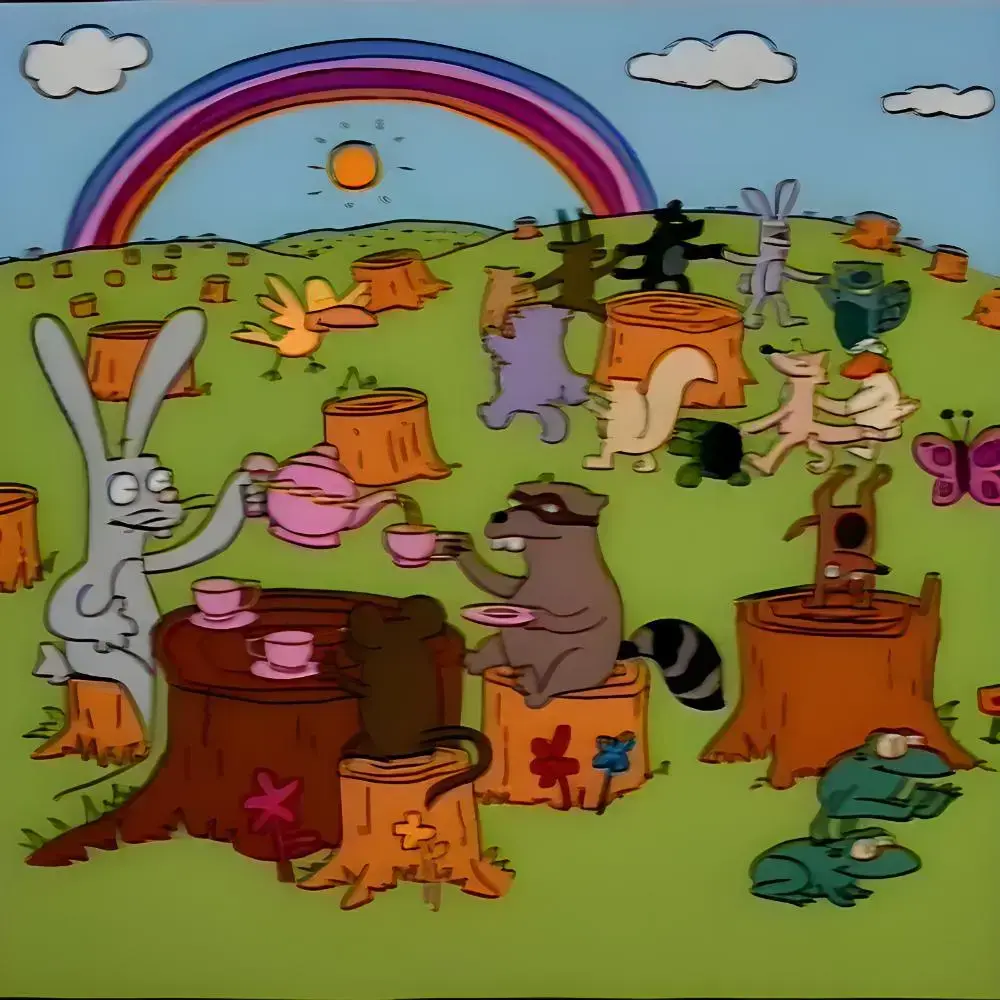are more likely than not killed by those seeking to enhance views and, accordingly, property values.
When there are no water views, the next reason is “leaves”, then “property damage” from branches, roots, leaves in gutters, “bird poo”, “solar panels”, “insects”, “sap”, “don’t like the look of it”, “gets in the way of my mower” and/or “it’s killing the grass”, the list goes on…
These are all paraphrased complaints about trees. It’s a hyper-common thing that trees are intentionally killed in the urban landscape. Unintentionally is usually ringbarking by whippersnippers and that kills just as many, if not more. Shame that well-treed suburbs actually increase property values but then cunts of individuals do their best to ruin that, it’s probably the main character syndrome.
The novelist and celebrated nature writer James Bradley says the “hatred of trees” is a settler-colonial legacy of the desire to impose order on the natural landscape and a symptom of increased alienation from nature.
“Trees have helped shape and sustain human cultures for hundreds of thousands of years. Many Indigenous cultures recognise this with systems of reciprocity that connect them to trees, within which trees are not just living beings, but actually relatives or kin. That connection has been disrupted by the processes of extraction that have seen most of the world’s forests cleared, and the hostility to trees you hear when people complain about their messiness, or them blocking their view,” he says.
“The more science learns about trees, the more we realise that even though they exist upon quite different timescales to humans, they are beings, with the ability to communicate and learn. And that they aren’t just good for the environment, they’re good for us, and just being around them makes us calmer, improves our mood, and makes us feel more connected to the world around us.”
The Neutral Bay photo shows that the sought after view was skyscrapers!? How is that preferable over trees?
These same people would complain if high rise was built across the road.
On the one hand, trees are a critical component of the biosphere. On the other hand, taking this fact into consideration, and comparing it to the psychological and monetary value of a nice view, well … “It’ll have to go,” the men of Krikkit said as they headed back for home.
It honestly makes my blood boil.(metaphorically)
I seen good solution for it. Instead of vandalised put e fence of size of the tree where tree was.
they do that on the central coast, they put huge signs in place of the dead tree. fuck those entitled NIMBY arsehols who do this
obnoxiously fluorescent backlit wacky inflatable wavy arm thing
Some councils use shipping containers and billboards, per the article:
Councils in Victoria including City of Port Phillip and City of Bayside (where trees have been illegally removed to enhance views of the bay) have erected view-blocking billboards in front of poisoned or removed trees. Other councils stack shipping containers where trees once flourished.
This is the best summary I could come up with:
Woodford Bay on Sydney’s lower north shore, its exclusive white mansions and quaint boat sheds nestled into gnarly, urban bush abutting the harbour, has the type of serenity only lots of money can buy in Australia’s most ostentatiously wealthy city.
You don’t need Holmesian powers of deduction to figure that public trees right across Australia, not least in Castle Cove and Woodford Bay, are more likely than not killed by those seeking to enhance views and, accordingly, property values.
Socially, therefore, the illegal killing of trees is a contemptuous act of theft from community; a criminal offence that should be pursued with the legal and law-enforcement vigour of other property and wilful damage crimes.
Her recent book with John Page, The Lawful Forest, traces the social history – dating to pre-Norman England – of tensions between communal and relational property, and the “private, commodified and enclosed” opposite.
Similar strategies are used in Sydney, rural NSW and Queensland to multiple ends: to deny the awarding of a prized view for an illegal act; to discourage copycats – and to publicly shame perpetrators.
Jane Lofthouse, the manager of sustainability and environment at Tweed Shire in northern NSW, says that in response to episodes of “vegetation vandalism’’ since 2016 the council has erected large signs in front – or in place – of the canopies of damaged and removed trees.
The original article contains 1,521 words, the summary contains 227 words. Saved 85%. I’m a bot and I’m open source!





